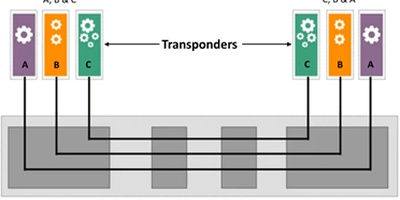Transitioning from Disaggregated to Complete Disaggregated Networking

Defining Basic Disaggregation in Networking
Disaggregated Networking is not a new concept, but Complete Disaggregated Networking is. Before understanding Complete Disaggregation, let’s define what disaggregation is in networking or what I call the basic disaggregation. Any white box works on the principle of disaggregation, for example, software is disaggregated from the hardware. Therefore, one can choose hardware from one vendor and the software from another one. This enables selecting the best-of-breed software and hardware, which is not possible with a traditional propriety box such as a traditional router. There are multiple benefits: more vendor choices because of the open interfaces between hardware and software; innovation as software is not tied to hardware and its release cycle; and cost savings because of the use of commodity hardware, which brings extra competition between vendors.

Figure 1.Traditional Router versus White-Box
Upping the Level with Complete Disaggregation in Networking
Complete Disaggregation takes the Basic Disaggregation concept to a completely new plateau: disaggregating routers at all levels (Figure 2). More specifically, it means:
- Software disaggregation from hardware through the use of white box.
- Control and data plane separation so each can be scaled separately as a box transforms into a cluster of boxes.
- Control plane containerization/cloudification allows it to run as cloud native, which enables quickly adding new microservice-based services running in separate containers.

Figure 2.Complete Disaggregation
Complete Disaggregation: Not Just a Vision on Paper
Complete disaggregation is aligned with the AT&T Disaggregated Distributed Chassis (DDC initiative) for which AT&T has submitted the specifications to the Open Compute Projects. Although this concept seems quite revolutionary and disruptive—some may merely call it a vision on paper—Drivenets, a small startup, boasts of a commercial solution that demonstrates that such a kind of disaggregation is possible.
But the question is why complete disaggregation matters at all?
Benefits of Complete Disaggregation or Why it Matters
Complete disaggregation offers several benefits:

Figure 3.Benefits of Complete Disaggregation
Scalability: With the complete disaggregation, the scalability reaches new dimensions and allows the use of a scale-out cluster approachin which the data plane (forwarding box and switching box) can be scaled separately than the control plane (which is usually an x86 server)with each layer becoming a Lego building block. An expansion can be done by adding a forwarding box when needed. Each layer in a cluster can be scaled separately.In a conventional router, exhaustion in forwarding ports means buying a new box with the switching and control cards, which is very inefficient and costly.
Service Agility and Operational Excellence: With the control plane disaggregated/cloudified, adding new services is easier, for example, with Drivenets, the edge, core,andaggregation services can be run on the same virtualized infrastructure. The is possible with a rich hardware abstraction layer and a control plane that uses separate containers running network services. The operating system can then attach any service to any port, whichprovides significantflexibility.The use of microservices and containers also means that introduction of new services is easier, which increases service velocity.
Cost Savings: Last but not the Least:Complete disaggregation is not just a technical innovation; itcan bring real economic benefits.The use of a white box is itself economical, as growing extra capacity is very efficient by just adding the necessary number of white boxes as demand grows. Its architecture enables the efficient use of infrastructure. ACG’s white paper demonstrates the TCO savings of using Drivenets' solution versus a traditional router solution: 51% TCO advantage over the current architecture. How is this saving possible? These savings come from using an attractive software-based model (as opposed to per port pricing), which lowers operations expense because of common routing blocks and using white-box scalable hardware.
Although it may seem that operationally it will be difficult to manage this cluster, thanks to the zero-touch provisioning feature, the routers can be provisioned quickly, and services brought up in no time. The use of a cloud-native architecture means that software upgrades can be rolled out rapidly and independently on each service/microservice without the risk to other service/microservices. Compare this to the traditional routers where upgrade is prone to risks and time-consuming activity.
Networking needs an out-of-box approach. Hampering the evolution has been the traditional monolithic way of routing stack implementations on purpose-built proprietary hardware. It is time the industry looks at the technology disruption already available at hand. With the tremendous growth in data and price pressures, service providers must take a fresh look at their strategy to answer the question of whether sticking to the conventional way of routing makes sense when there are already better ways of implementations available. Drivenets has the answer ready for them.
Click for more information about Ray Mota.






















































